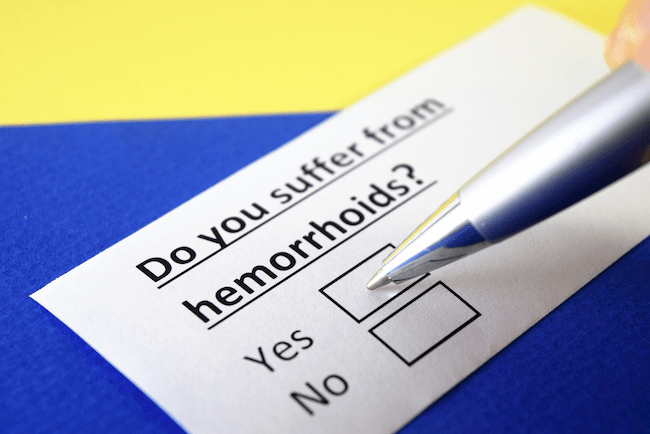Just the thought of hemorrhoids is enough for most people to cringe, either in embarrassment or at the thought of pain. But if you’ve ever experienced them, you are not alone — and help is available!
Because hemorrhoids involve a “private” area of the body and are often a source of embarrassment, they aren’t usually the topic of conversation. That doesn’t mean, however, that you’re the only one experiencing them.
In fact, by age 50, around half of Americans have experienced at least one of the symptoms associated with internal or external hemorrhoids. So today let’s break down some facts about this common condition.
Everyone has hemorrhoids
What? Yes — we said it. Every human has hemorrhoids. While we commonly use that terminology to reference when we experience a problem, the hemorrhoids are actually a pillow-like cluster of veins beneath the membranes that line the anus and lowest part of the rectum.
So, everyone has them.
But we’ve also established that the condition affecting the hemorrhoids is also common. It occurs when the veins become swollen and distended, much like what happens when you develop varicose veins in the legs.
How hemorrhoids occur
Our entire bodies are weighed down by gravity — and blood vessels in the lower half of the body must battle gravity to push blood back up to the heart. One common result? Hemorrhoids.
The tissue supporting these blood vessels stretches, which over time causes the vessels themselves to expand and their walls to thin out. As stretching and pressure on the area continues, those veins protrude, which is the condition we commonly reference as hemorrhoids.
There are two hemorrhoid types — internal and external. And they’re pretty much what you’d expect from their names.
Internal occur inside the rectum, where they’re not visible. You usually can’t see or feel them, but eventually, straining may damage the surface of a hemorrhoid and cause it to bleed. Every once in a while, straining can also push an internal hemorrhoid through the anus, which is known as a prolapsed or protruding hemorrhoid.
External hemorrhoids occur under the skin around the anus, and when these veins are irritated, they can itch or bleed. On occasion, a blood clot can form inside an external hemorrhoid, which can cause severe pain and is known as a thrombosed hemorrhoid.
Signs & symptoms of hemorrhoids
In some cases, particularly with internal hemorrhoids, you may not experience symptoms at all. Symptoms are usually dependent on the location and type of the hemorrhoid and may include:
- Pain or discomfort
- Swelling around the anus
- A sensitive or painful lump around the anus
- Painless bleeding during a bowel movement
- Itching in the anal region
- Irritation in the anal region
Because rectal bleeding is also associated with other medical conditions, it’s important to talk with your doctor if you’re experiencing bleeding, especially if it’s frequent or recurrent.
How to prevent hemorrhoids
The way to understand how to prevent hemorrhoids is to understand why they occur. While the exact cause is unknown, certain factors and lifestyle habits can make you more likely to develop them. To prevent hemorrhoids:
- Maintain a healthy weight. While our upright posture as humans puts us at risk of hemorrhoids due to gravity, carrying around excess weight can increase the risk by putting more pressure on the lower half your body.
- Eat more fiber. Straining or spending an excessive amount of time on the toilet during bowel movements can increase the risk of hemorrhoid development. Fiber in your diet helps soften your stool, making it easier to pass.
- Exercise regularly. While this can help you maintain a healthy weight, which reduces your risk in and of itself, exercising can help stimulate bowel function. Essentially, you get things moving when you get moving!
- Avoid sitting for too long. Sitting for long periods of time, particularly on the toilet, increases pressure on the veins in the anus.
What to do if you have hemorrhoids
We talked a bit about prevention, but what if you already have a hemorrhoid? Well, the tips above related to fiber, exercise and sitting are still super relevant when it comes to relieving the pain associated with hemorrhoids.
Beyond those, you can also take regular baths, soaking your bottom half in plain, warm water for 10 to 15 minutes at a time a few times a day. Topical treatments, like over-the-counter hemorrhoid cream or pads containing witch hazel, may also help you find relief.
If your discomfort continues after trying at-home remedies, talk with your doctor about what you’re experiencing. He or she can perform a basic exam and prescribe treatment that may include prescription medications or even minimally invasive procedures to treat the hemorrhoid in severe cases.
If you’re experiencing painful or recurrent hemorrhoids, help is available. Talk with your doctor about your symptoms. Find a doctor here.







